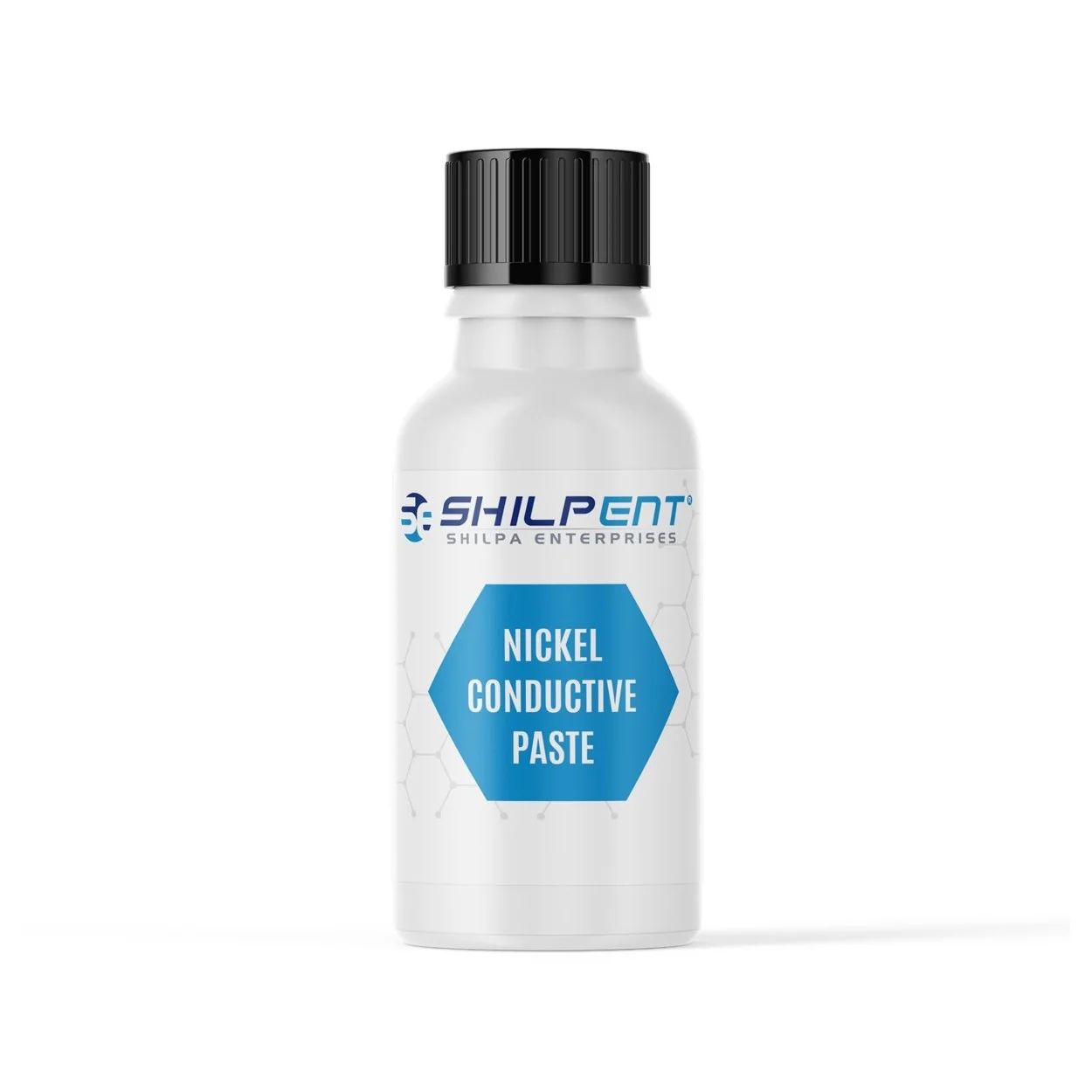Details and Specification of Nickel Conductive Paste
An adhesive that forms a robust, conductive connection between two surfaces is called Nickel Conductive Paste. Another name for it is Nickel Conductive Paint. The paste is a homogenous mixture that is easily applied and cured. It is composed of finely dispersed nickel nanoparticles suspended in a binder.
Excellent resistance to chemicals and water is another well-known feature of it. There are various specifications for the paste, including gap filling, color, melting and boiling points, viscosity paste, solid content, and abrasion resistance. Techniques such as brushing, spraying, dispensing, and dip coating are used to apply nickel conductive paint. It is manufactured so that it has many advantages, like high thermal and electrical conductivity, powerful adhesive qualities, chemical and water resistance, and flexibility.
For Nickel Conductive Paste to reach its ultimate electrical and mechanical properties, curing is required after application. The curing procedure entails subjecting the paste to heat for a predetermined duration. The manufacturer's instructions and the particular Nickel Conductive Paste determine the cure schedule. As an illustration, PELCO High-Performance Nickel Conductive Paint must cure for two hours at 93°C (200°F) to reach its desired mechanical and electrical qualities.
Features
- High electrical conductivity: Applications requiring low-volume resistivity can benefit from Nickel Conductive Paint's notable electrical conductivity.
- Strong adhesion to various substrates: The paste creates a strong bond between two surfaces, making it ideal for bonding applications that require high physical strength and uniform conductivity.
- Ideal for uses where a conductive bond is necessary: Applications such as touchscreens, displays, and EMI/RFI shielding that call for a conductive bond between two surfaces use Nickel Conductive Paint.
- Controlled particle size distribution: The paste contains high-quality nickel particles that have a controlled size distribution, which influences the paste's conductivity and bonding properties.
- Resistance to water and chemicals: Nickel Conductive Paint is known for its excellent resistance to water and chemicals, making it suitable for applications that require exposure to hostile natural conditions.
- Flexibility: Metals, ceramics, and plastics are just a few of the substrates to which the paste can be applied.
- Thermally Conductive: The paste's ability to dissipate heat effectively makes it appropriate for application use.
- Available in different sizes and specifications: Nickel Conductive Paint is offered in various sizes and specifications, including full cure time, work time, gap filling, color, viscosity, solid content, surface resistivity, and abrasion resistance.
Applications Of Nickel Conductive Paste
Nickel Conductive Paste has several applications in different industries. It is utilized to create touch-enabling transparent conductive layers. It is also used in the electronics sector for shielding against radio-frequency interference (RFI) and electromagnetic interference (EMI).
Due to its excellent electrical and thermal conductivity and lack of hydrocarbons, it is used in surface science and scanning electron microscopy (SEM) applications. Due to its low VOCs and good electrical and thermal conductivity, it is also used in 3D printing and additive manufacturing to create conductive circuits and traces.
The following are a few uses:
- Production of displays and touchscreens
- EMI/RFI protection
- Preparing specimens for surface science and SEM uses
- Uses of ultra-high vacuum
- Applications for bonding
- 3D printing and additive manufacturing
How to use ?
- Dry and clean every surface that needs to be bonded.
- Apply the paste using a brush or spatula.
- Prewet the surface to improve adhesion.
- To ensure proper bonding, maintain a uniform bond line.
- To guarantee good bonding, the surfaces should be subjected to uniform pressure.
- Before the paste dries, any extra material should be removed with a cloth.
- To obtain its ultimate mechanical and electrical properties, the paste must cure.
- After curing, multiple coats of Nickel Conductive Paste can be applied.
Safety Instructions
- Put on the proper personal protective equipment, such as gloves, safety glasses, and a respirator.
- Avoid ingesting or inhaling the paste.
- Avoid getting pasted on the eyes or skin. If contact occurs, use water to clean the impacted area.
- Use the paste in a place with good ventilation.
- The paste should not be near heat sources, sparks, flames, or other sources of ignition.
Why Choose Us?
Shilpa Enterprises has been a premium producer and supplier of Nickel Conductive Paste and inks all over the world for more than ten years. We provide a variety of delivery choices. We accommodate our clients' unique production requirements. Our primary focus is quality, and we provide competitive prices and personalization choices for larger orders. We take great pride in our dedication to providing high-quality products and guaranteeing client happiness.



